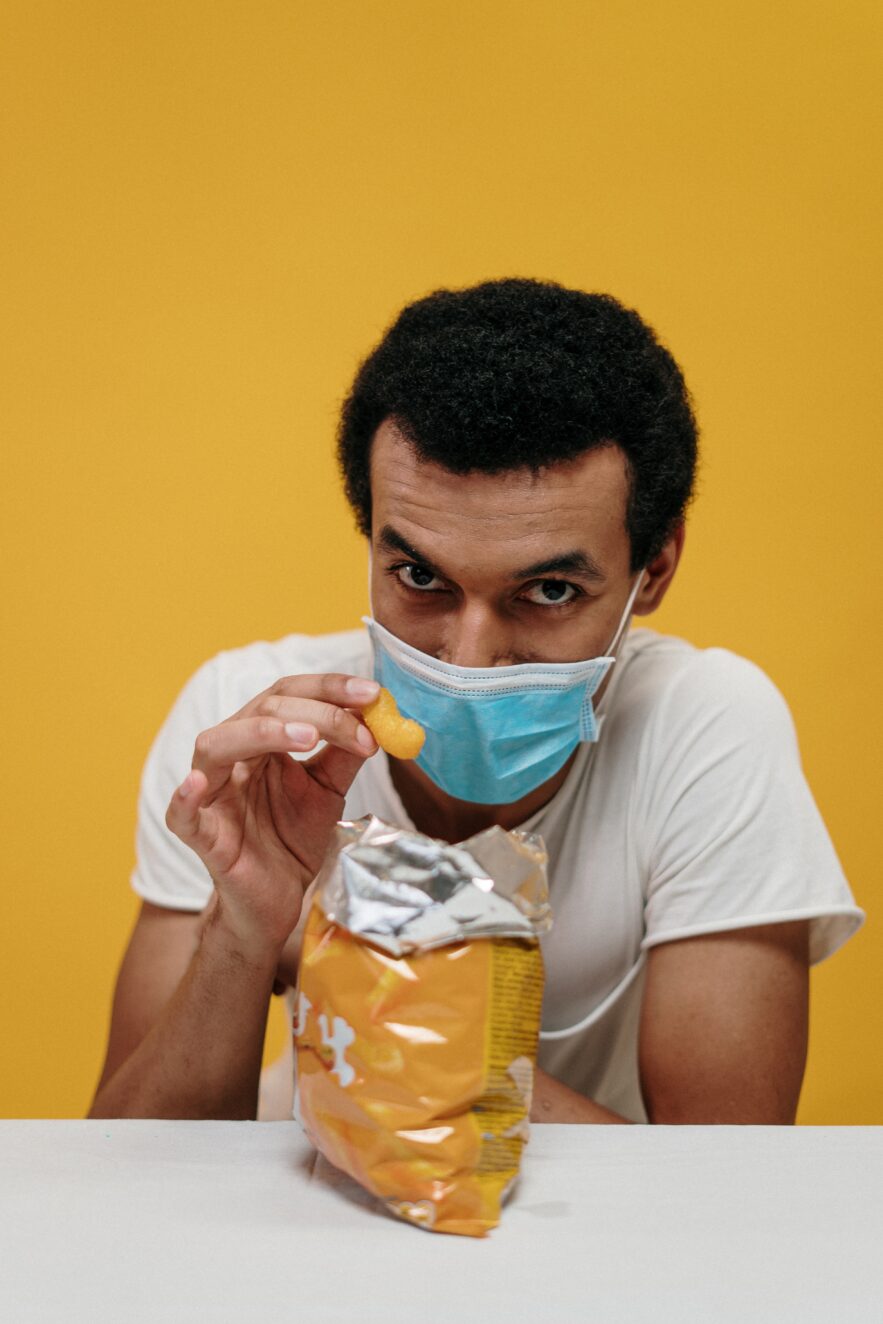Chris van Tulleken did an experiment a la Supersize Me whereby he, the researcher, was a guinea pig in the extreme sport version of eating poorly.
“The idea was simple: I would quit UPF for a month, next month I would eat a diet where 80 percent of my calories came from UPF – the same diet that around one in five people in the UK and the USA eat.”
“Ultra-Processed People: The Science Behind Food That Isn’t Food,” by Chris van Tulleken, is a rousing and eye-popping look at the history, research, and real-life impacts of eating food ingredients not found in a kitchen, also known as ultra-processed food. The book “Ultra-Processed People” is a jampacked mix of short bursts of history, research broken down with humor and personal stories, and van Tulleken’s own scientific curiosity.
Van Tulleken is an infectious diseases doctor and researcher at University College London Hospitals (UCLH), as well as a seasoned BBC journalist, a winning combination to take us down this rabbit hole. As you’re asking yourself, “what is ultra-processed food (UPF) and what it is doing to us and our world,” the book “Ultra-Processed People” is the kind of page-turner where you don’t want to keep turning the pages, but you can’t help yourself. It is a horror story and a train wreck. You just can’t look away! It had me pulling out the contents of my fridge and maniacally reading the labels. Thankfully, van Tulleken’s humor helps offset the reader’s inevitable transition from shock to rage and gets us through the full 300+ pages.
What is Ultra Processed Food?
Van Tulleken opens by asking what, exactly, UPF is. To say it is junk food is partly correct. Junk food is indeed ultra-processed. But ultra-processed food is not necessarily junk food. Van Tulleken spends a fair amount of time going through the history and research that attempts to define ultra processed food. It reads like the history of nutritional science and interviews with UPF insiders. We learn about why today’s ice cream doesn’t melt as quickly as it should, and why way back when Napolean III awarded a prize to a scientist who could invent a butter substitute (spoiler alert, it’s not very elegant). In looking for a scientific definition of UPF, two research papers changed his life, “A new classification of foods based on the extent and purpose of their processing,” (lead author Carlos Monteiro). Monteiro proposed a food classification system now known as NOVA. The NOVA system splits food into four groups. It is a lengthy definition, but to over simplify it; Group 1 is food found in nature, think plants and animals. Group 2 is ‘processed culinary ingredients’ from oils to honey, it’s “nutrient-poor” and “energy dense” but if you mix them with food from Group 1, you’ve hit the jackpot of tasty. Group 3 is processed food, usually for preservation. We are talking about smoked meat, canned tuna, freshly made bread. Now we come to Group 4, ultra-processed food, and Monteiro makes a long and scientific journey to define it. The short version is this: Industrial food from formulas that use processes to fraction whole foods into substances that are then chemically modified. And that’s the short version! In other words; profitable, convenient, and hyperpalatable.
The second research paper to change van Tulleken’s life, and that goes hand in hand with Monteiro’s is,“Ultra-processed diets case excess calorie intake and weight gain, an inpatient randomized controlled trial of ad libitum food intake,” (lead author Kevin Hall). Both papers are cited throughout the book. Monteiro has a theory, and Hall confirms it: worldwide obesity increased dramatically since the 1980s because of a correspondingly rapid increase in the production and consumption of UPF (and beverages).
The key word is production. UPF is not defined just by a list of ingredients, it is the actual process of making food, and while some ingredients in UPF are recognizable, others are not. It turns out that these two papers were not well known among van Tulleken’s colleagues. He needed more information. So he sets out to experiment on himself.
For his experiment, the first month he fasts on UPF, and the next month he binges. After the first month of eliminating UPF, and before launching the 80% UPF diet for four weeks, he recorded baseline vitals with colleague Rachel Batterham at University College London Hospitals (UCLH). He is weighed, measured, gets an MRI scan even though he doubts its necessity. We begin this journey with him. Unsurprisingly after a month of avoiding ultra-processed foods, he feels fitter after month one. This is the baseline, a healthy average male weighing 82 kg (180 lbs), BMI: 24.2, Body Fat 17 percent. Month two? He gains weight, his family gains weight (what child could say no to the new endless boxes of chocolate cereal?), and the food eventually even loses its only appeal; taste, and yet he craves it. He is unhealthy. I won’t spoil it with the numerical end results, but they aren’t pretty.
UPF is created to sell products, not for nutrition. It is also hard to say no to, and that is not the fault of the person about to eat. With research and anecdotes, he lays out why weight control is not about sugar, exercise, or willpower. When he looks at his MRI results after his diet, he turns to the idea of addiction.
“As my knowledge about the harms of UPF grew, it became less enjoyable but not less desirable… The changes in my MRI were physiological not morphological – the actual wiring of my brain hadn’t changed, but the information flowing through the wires had.”
The side effects of UPF will take years of research to unravel. Van Tulleken points out that a cocktail of over 10,000 chemicals in US food has adverse effects, from reduced fertility to metabolic disease, but that these side effects, like those of drugs, sometimes take years to manifest. Still, UPF is on the side-effects radar, and we can only hope more research on the adverse effects of UPF will come to light. As if on cue, a recent study by Brigham and Women’s Hospital and the Harvard T.H. Chan School of Public Health takes it a step further than van Tulleken, showing that the consumption of UPF increases the risk of depression.
Van Tulleken is a researcher, first and foremost, and throughout his journey there are deep dives into the history and science of food. And, I do mean deep. While mostly entertaining, and intriguing in that rubbernecking-an-accident kind of way, it is a lot. There are almost fifty pages of footnotes alone!
But the skill of writing research in layperson’s terms is something we, at MedShadow, know a little about, and van Tulleken does it well. He navigates us through the invention of UPF, the varying ways UPF is created and sold, the profligate “commerciogenic malnutrition” (malnutrition caused by companies, think Nestle and baby formula in developing nations), and the growing list of diseases (think obesity, diabetes, cancer, etc.) caused by UPFs.
If this is an enjoyable read, it is only because van Tulleken has experience as a BBC broadcaster and hosts a podcast with his twin brother, he knows how to woo a crowd. “Ultra-Processed People,” while entertaining, is a bitter and painful pill to swallow.
Towards the end of the book, he is looking for what-do-we-do-about-it kind of answers.
In the UK, there are over 2,000 additives. In the U.S., the figure is unknown but is thought to be over 10,000.
The Food and Drug Administration (FDA), which regulates food in the US, was ordered by Congress in the 1950’s to regulate the cumulative effect of food additives. While tests on whether certain molecules cause cancer exist (birth defects or immediate toxicity), longer term remains more difficult to assess. The Food Additives Amendment in 1958 allowed some additives to be considered ‘generally recognized as safe’ (GRAS), so that things like table salt could avoid the intense safety-review process. So of course, immediately hundreds of chemicals were added to the GRAS list. From the 1960’s-1980’s a backlog of FDA approved additives ballooned, so companies made their own list without the FDA knowing, and by 2017 the FDA approved this form of self-regulation. And here we are.
He poses the question whether a company like DuPont, a maker of a popular emulsifier that “improves cake batter performance and crumb structure – while also working well in plastics as an ‘anti-fog’ agent,” can be trusted to regulate itself. Internally produced and conflict of interest studies abound. He tells us that food companies are now investing in healthcare and pharmaceutical companies.
From asking what UPF even is, to a “now what do we do?” question, he ends with a bit of hope. Perhaps governments and those in the medical profession, from world-renowned microbiologists to our local nutritionist, can stem the rising tide of UPF, and the global health crisis it is feeding.






